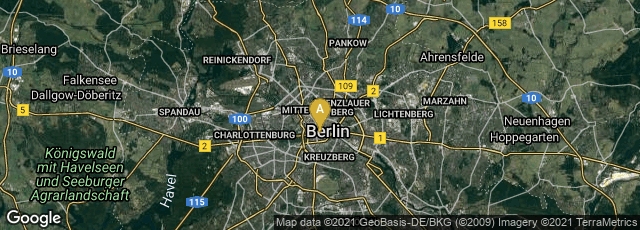

A: Mitte, Berlin, Berlin, Germany
In 1900 Max Planck Professor of physics at the Humboldt University of Berlin published "Zur Theorie des Gesetzes der Energieverteilung im Normalspectrum," Verhandlungen der deutschen physikalischen Gesellschaft 2, 237-45. Planck’s paper on quantum theory marked the dividing line between classical and modern physics. Around 1896 Planck became interested in solving one of the outstanding difficulties in classical physics: the lack of agreement between observed specific heats of molecules and those predicted by the Maxwell-Boltzmann distribution theorem on the equipartition of energy among the degrees of freedom of molecular systems.
“[Planck] applied Boltzmann’s equation from the theory of gases (relating entropy and probability) to a set of resonators, the energy of which, he hypothesized, occurred only in discrete multiples of ε. From Wien’s displacement law he reasoned that the entropy was a function of E/v (energy/frequency). He was then led to the famous relation between a quantum of energy and the frequency, and to the introduction of the constant named after him: E = hv” (Weber, Pioneers of Science, p. 58).
Planck’s radiation law agreed with all the experimental data, and played a decisive role in Einstein’s explanation of the photoelectric effect (1905), as well as his derivation of a more satisfactory theory of specific heats (1906).
“This new application of the quantum theory was soon followed by others. As a result, quantum theory, a theory which exhibited features clearly distinct from the previous classical theories of mechanics and electrodynamics (including relativity theory), turned into one of the most revolutionary fields of physics in the early twentieth century” (Mehra & Rechenberg, Historical Development of Quantum Physics, I, p. 24).
This volume also contains Planck’s two papers prefiguring his final formulation of the quantum theory: “Ueber eine Verbesserung der Wien’schen Spectralgleichung” (pp. 202-4) and “Ein vermeintlicher Widerspruch des magneto-optischen Faradayeffects mit der Thermodynamik” (pp. 206-10).
Horblit, One Hundred Books Famous in Science, 26a. Dibner, Heralds of Science, 166. Hook & Norman, The Haskell F. Norman Library of Science and Medicine (1991) no. 1713. Carter & Muir, Printing and the Mind of Man, no. 391a.